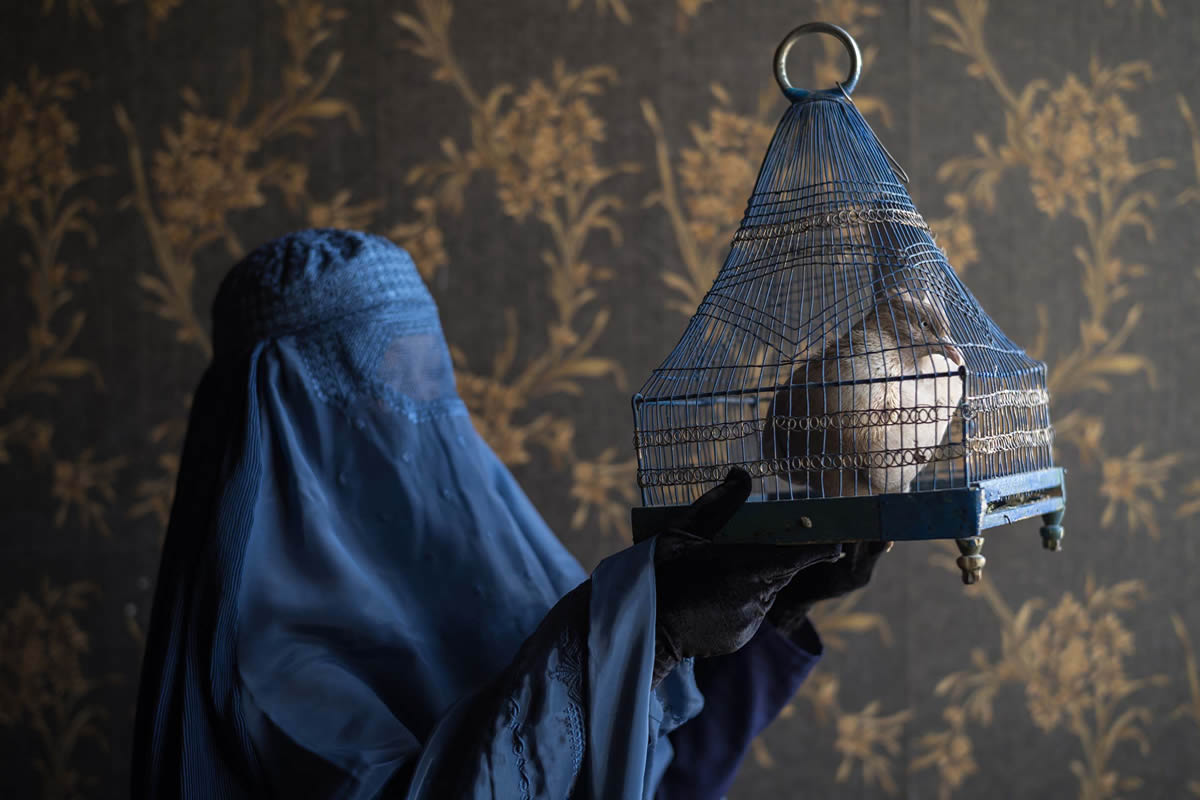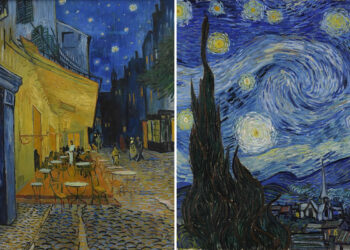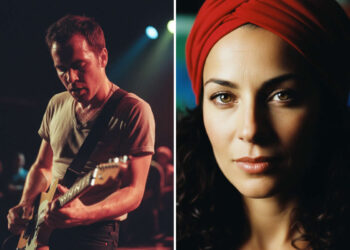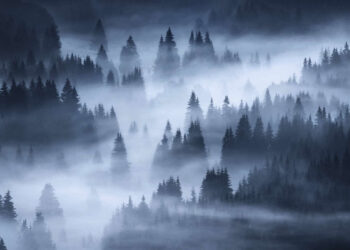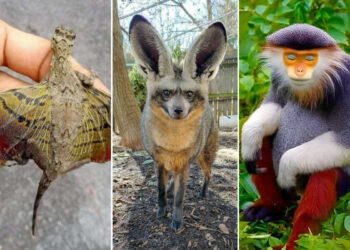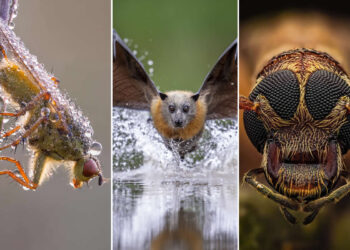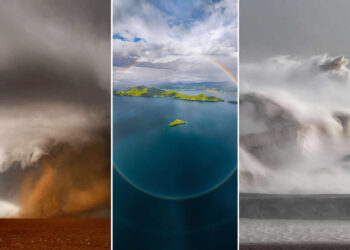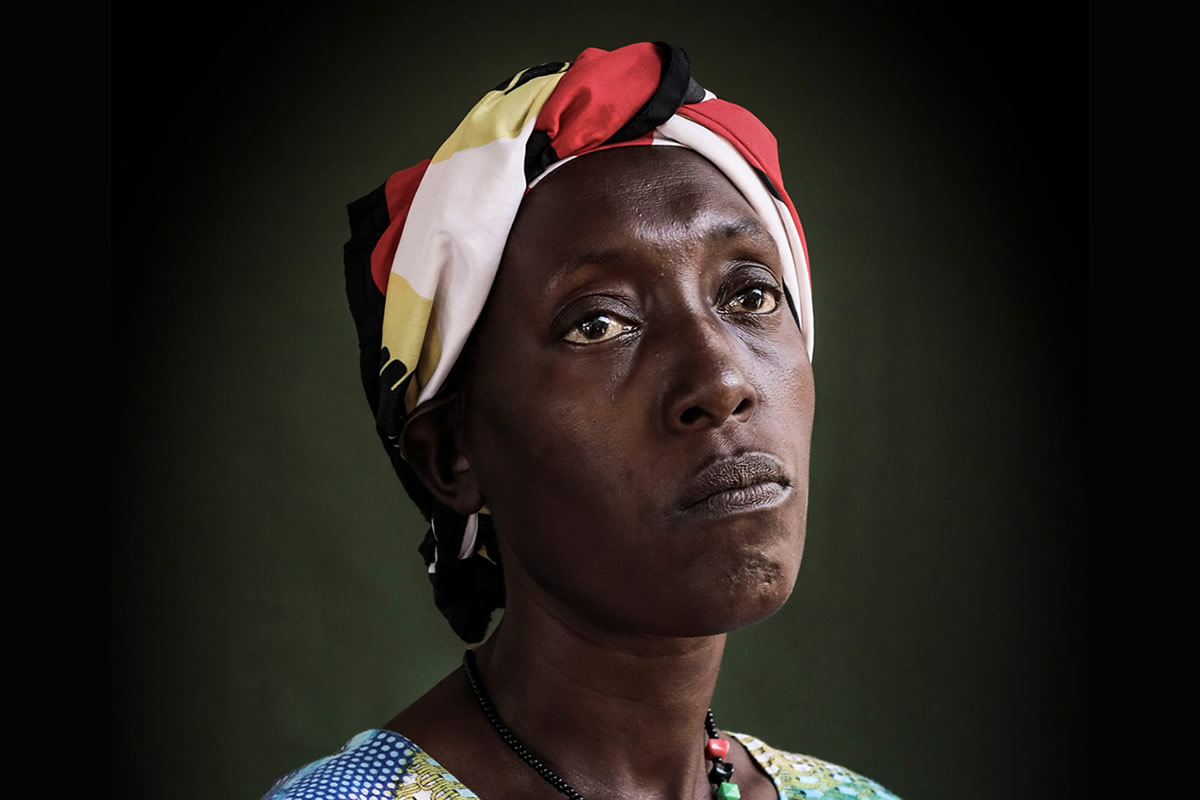The İstanbul Photo Awards 2025 has once again celebrated the power of photojournalism, unveiling 20 heart-touching winning images that showcase the raw emotions and realities of global events. Organized by Anadolu for the 11th year, the competition attracted documentary photographers and renowned photographers from around the world, with nearly 22,000 submissions across 10 categories.
This year’s Photo of the Year was awarded to Palestinian photographer Saeed Jaras for his deeply moving image, "Gaza-Deir al-Balah," capturing a grieving family after an airstrike. These winning photographs serve as a testament to the impact of visual storytelling, bringing untold stories to the forefront of global awareness.
Continue scrolling to immerse yourself in these powerful images, and if you want to learn more about the photographers and their stories, be sure to visit their official website for additional details.
You can find more info about Istanbul Photo Awards:
#1. Photo of the Year 2025 & Single News 1st Prize: "Gaza – Deir al-Balah / Palestine" by Saeed Jaras
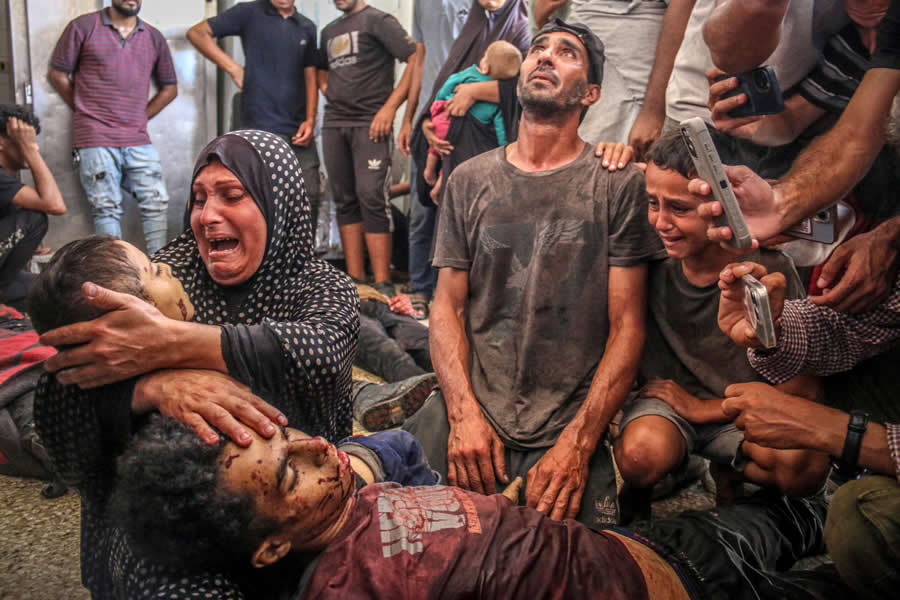
© Saeed Jaras, Middle East Images, Palestine
"A mother and father embrace their children who were killed in an Israeli airstrike on their tent in the Gaza Strip’s central city of Deir al-Balah on Aug. 28, 2024."
#2. Single News 2nd Prize: "Rest in Peace / Palestine" by Saher Alghorra
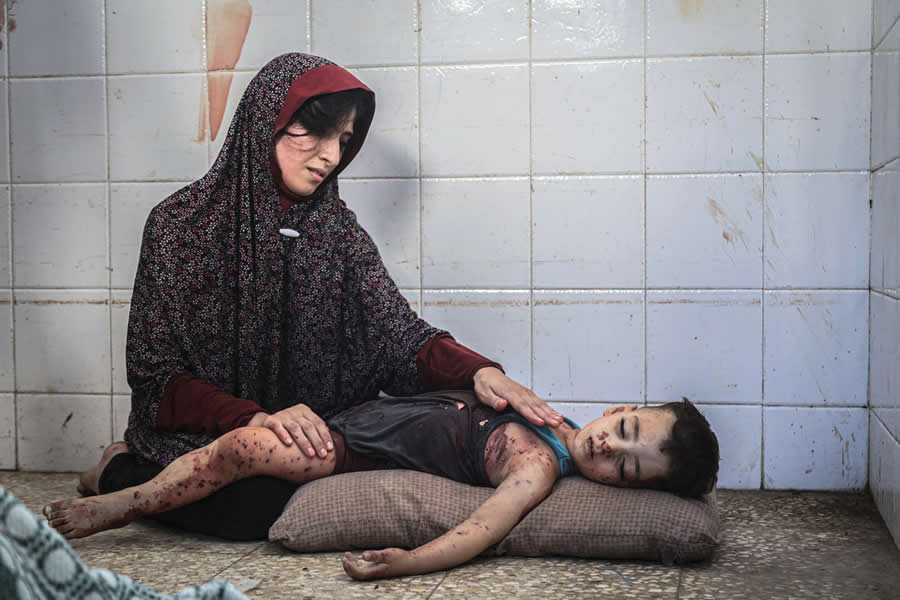
© Saher Alghorra, Zuma Press, Palestine
"A mother bids farewell to her son, Ziad Saidam, in a mortuary of the Al-Aqsa Martyrs Hospital after he was killed by Israeli forces bombing their home in the Nuseirat camp in Deir al-Balah, the central Gaza Strip, on July 24, 2024."
#3. Story News 1st Prize: "Israel-Palestine Conflict / Palestine" by Omar Al-Qattaa
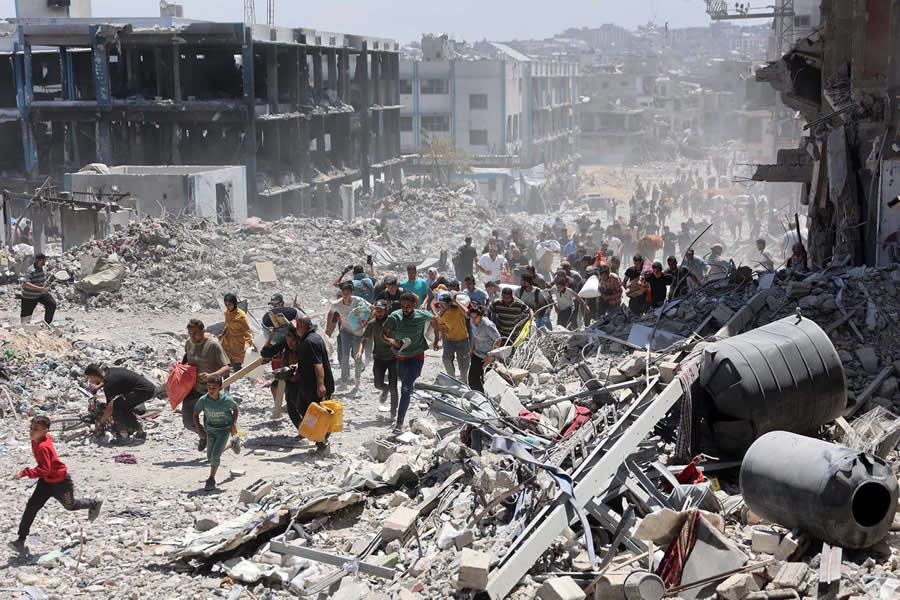
© Omar Al-Qattaa, AFP, Palestine
#4. Story News 2nd Prize: "The Shadows Already Have Names / Syria" by Samuel Nacar
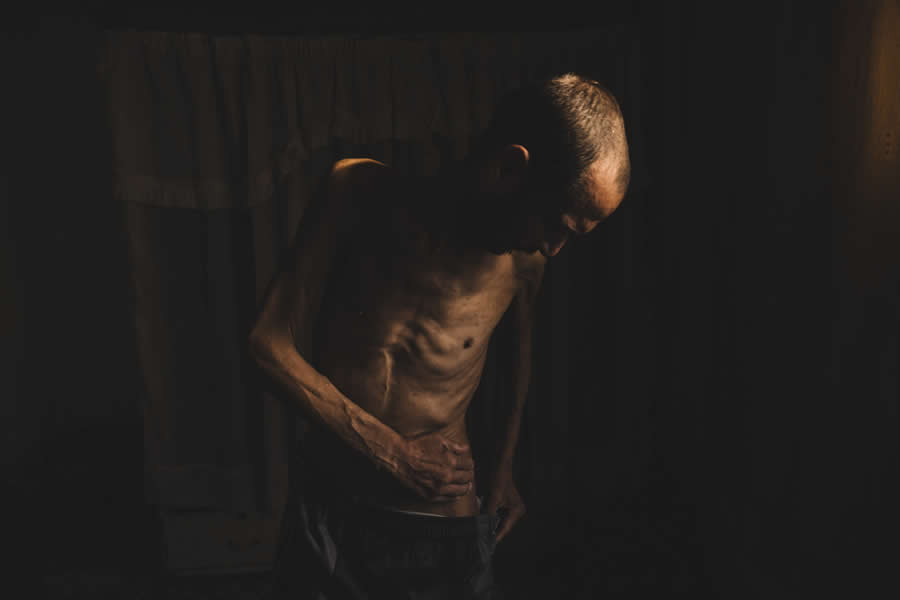
© Samuel Nacar, Revista 5W, Spain
Since protests first broke out in Syria in 2011, Assad’s regime turned its already brutal prison system into a weapon of war, designed to crush tens of thousands of lives on an industrial scale. What remained were lifeless, broken bodies, stripped of soul and dignity. This story, combining photographs and aerial footage, exposes that grim reality through interviews with nine survivors. All were imprisoned in intelligence service detention centers, and six were later transferred to the notorious Sednaya military prison.
#5. Single Sports 1st Prize: "The Golden Moment / French Polynesian Island" by Jerome Brouillet
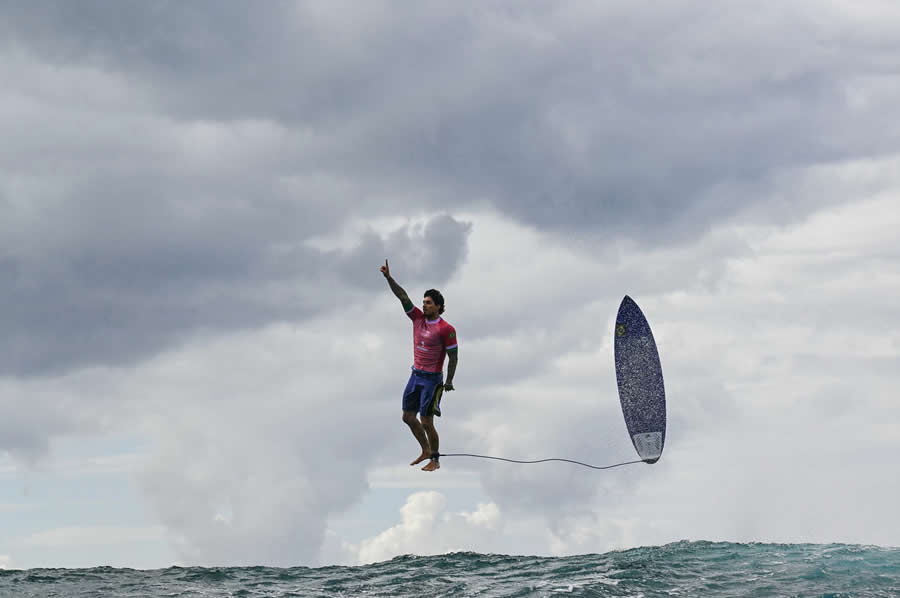
© Jerome Brouillet, AFP, France
Brazil’s Gabriel Medina reacts after catching a large wave in the 5th heat of the men’s surfing round 3 in Teahupo’o, on the French Polynesian Island of Tahiti, during the Paris Olympic Games on July 29, 2024.
#6. Single Sports 2nd Prize: "Hurdle Wipe Out / France" by Richard Heathcote
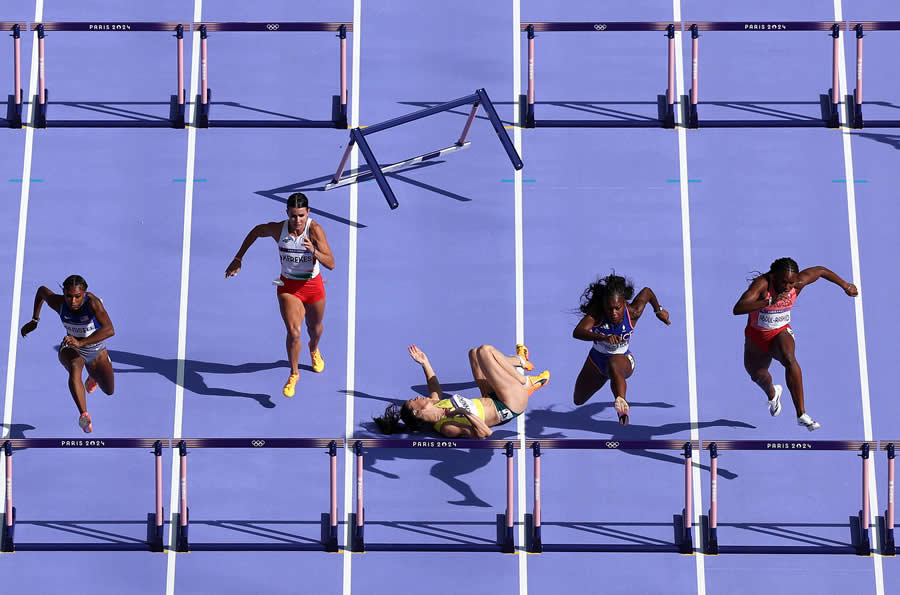
© Richard Heathcote, Getty Images, United Kingdom
Michelle Jenneke of Team Australia (3rd R) knocks over a hurdle during the Women’s 100m Hurdles Round 1 on day 12 of the 2024 Olympic Games in Paris at Stade de France on Aug. 7, 2024.
#7. Story Sports 1st Prize: "Simone Biles and the Olympic Games / France" by Hannah McKay
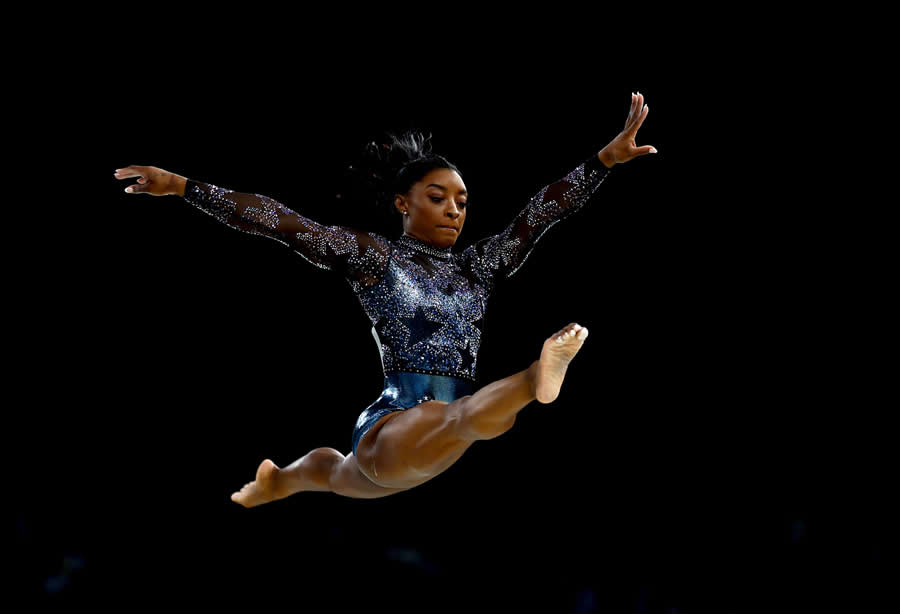
© Hannah McKay, Reuters, United Kingdom
The story of Simone Biles at the Paris Olympics. Biles led the US women’s team to gold in the artistic gymnastics team final, then added three more medals in the individual finals. With 11 Olympic medals and 30 World Championship medals, she stands as the most decorated gymnast in history.
#8. Story Sports 2nd Prize: "The Junkyard / Mexico" by Cristopher Rogel
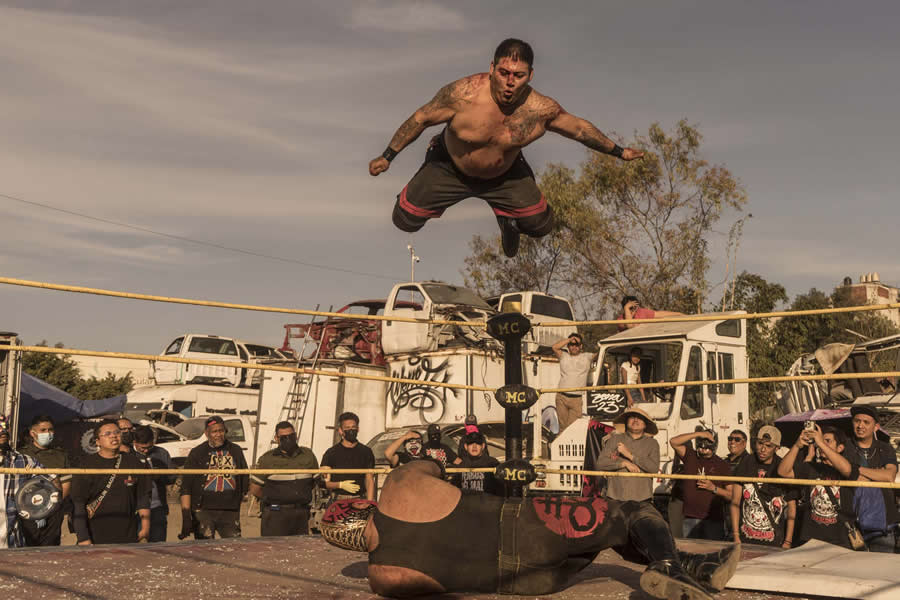
© Cristopher Rogel, Mexico
Violence as an Escape from Violence. Bloodied faces from shattered light tubes; scarred backs torn by falls onto thumbtacks; foreheads gashed by forks and barbed wire; euphoria, screams, beer, adrenaline. This is extreme wrestling at the Junkyard in Tultitlán, State of Mexico — one of the most violent areas in the metropolitan zone surrounding Mexico City, with 250 reported crimes per 100,000 inhabitants, according to the National Security System and the National Institute of Statistics and Geography (INEGI).
#9. Single Nature & Environment 1st Prize: "Volcano Eruption Near Grindavik / Iceland" by Anton Brink
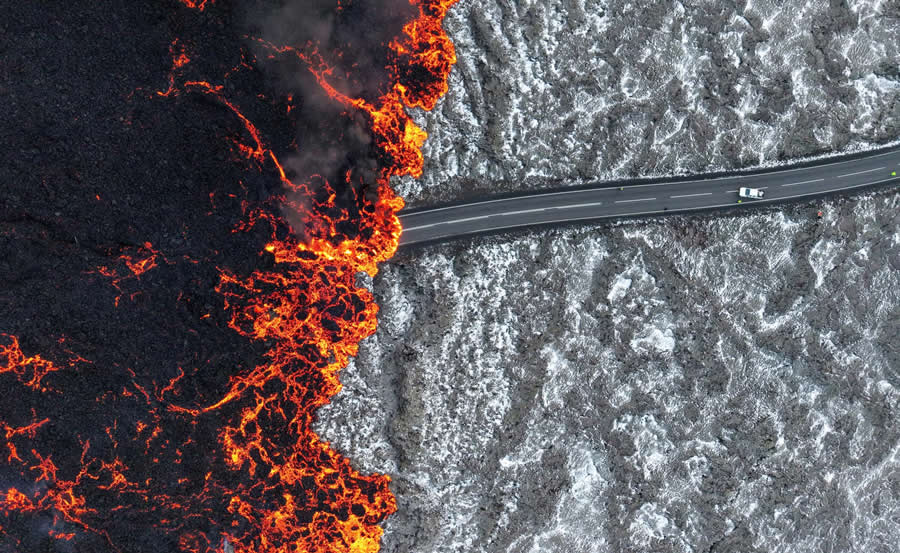
© Anton Brink, EPA, Iceland
Lava flows across a road near Grindavik on the Reykjanes Peninsula, Nov. 21, 2024. According to the Icelandic Meteorological Office, a new fissure erupted in the area, sending hot lava spewing into the air.
#10. Single Nature & Environment 2nd Prize: "Surrounded / Kenya" by Bence Mate
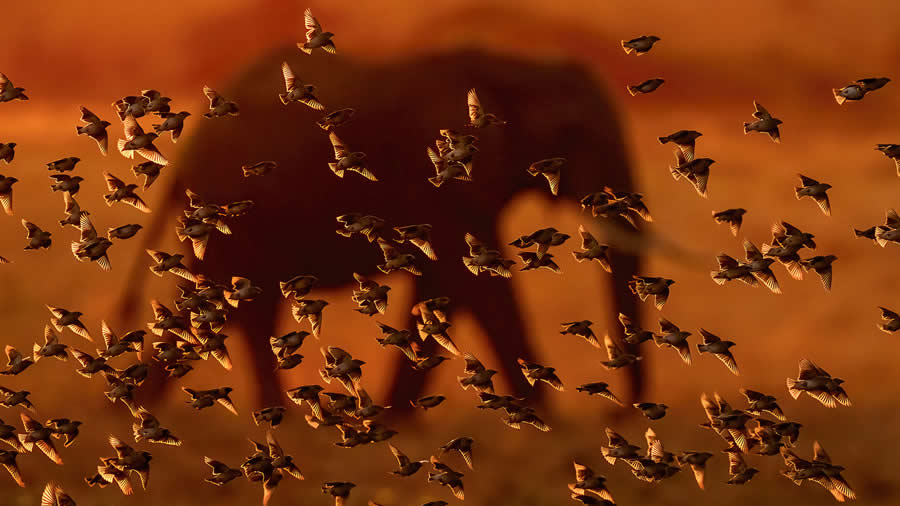
© Bence Mate, Hungary
Bathed in the golden glow of a Kenyan sunset, an African bush elephant strides gracefully as a flock of red-billed queleas takes flight, capturing the harmony of life on the savannah. Photographed on Sept. 15, 2024.
#11. Story Nature & Environment 1st Prize: "East Africa Floods / Kenya" by Luis Tato
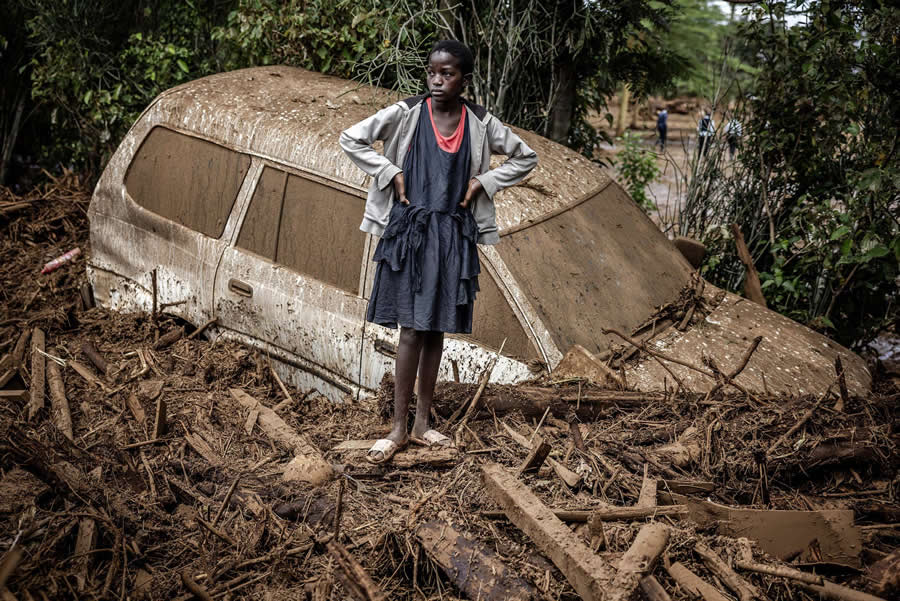
© Luis Tato, AFP, Spain
In 2024, intense floods swept across East Africa, displacing thousands, crippling infrastructure, and leaving communities struggling to access essential resources. Kenya faced one of its worst floods in recent memory, the latest in a string of weather disasters driven by weeks of relentless rainfall linked to a changing climate. The disaster laid bare the region’s mounting vulnerability to extreme weather, claiming over 300 lives and displacing more than 55,000 households as murky waters engulfed villages, destroyed roads, and overwhelmed dams.
#12. Story Nature & Environment 2nd Prize: "After the Floods / Spain" by David Ramos
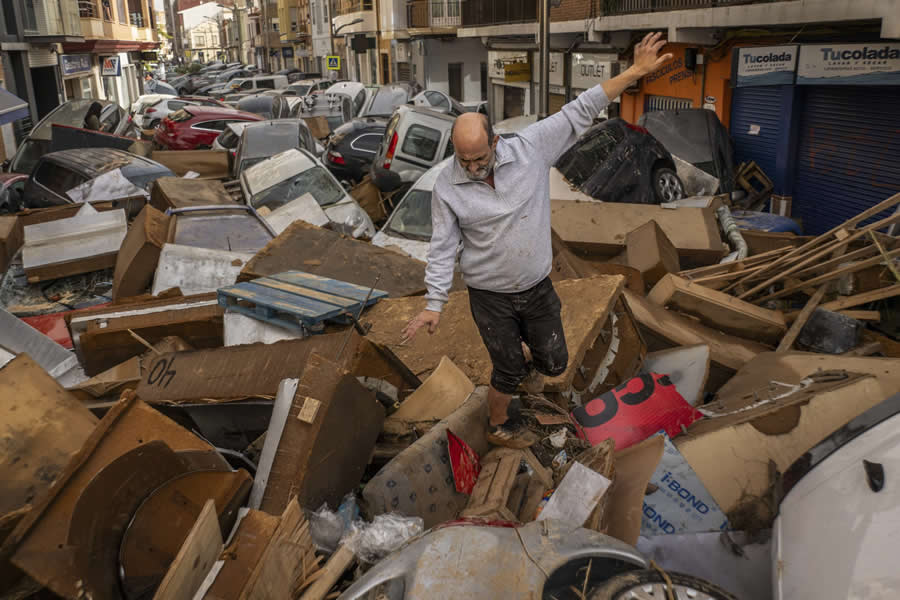
© David Ramos, Getty Images, Spain
In late October, Valencia faced devastating storms that brought record-breaking rainfall, flooding towns like Massanassa, Alfafar, and Paiporta. Torrents swept away cars, submerged homes, and severely disrupted infrastructure, leaving residents stranded and emergency services overwhelmed. Key areas, including railway lines, were heavily damaged, halting travel for days. Rescue teams officially confirmed 231 victims. The aftermath revealed the region’s vulnerability to extreme weather events and highlighted the urgent need for improved infrastructure and emergency planning to prevent future disasters.
#13. Single Portrait 1st Prize: "Caged / Afghanistan" by Mauro De Bettio
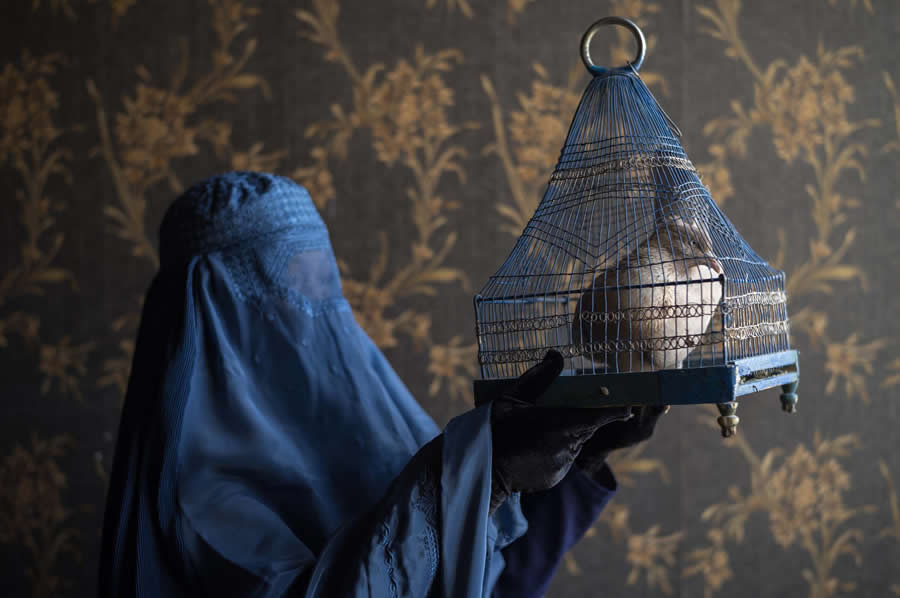
© Mauro De Bettio, Italy
An Afghan woman in a blue burqa holds a caged dove, a powerful image that reflects themes of restriction and hope. The cage suggests barriers, while the dove symbolizes the desire for freedom. Set against patterned wallpaper, the scene contrasts domestic enclosure with the desire for autonomy, offering a reflection on the complexity of Afghan women’s experiences. Photographed on March 21, 2024.
#14. Single Portrait 2nd Prize: "Lost Abkhazia / Georgia" by Marylise Vigneau
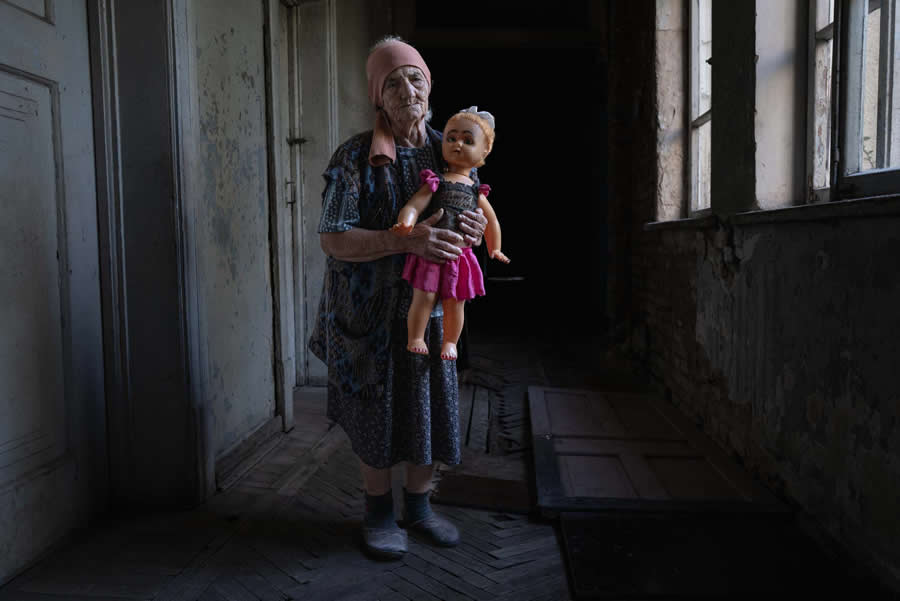
© Marylise Vigneau, France
Dzabuli Bendeliani was born in the Georgian region of Abkhazia during World War II. In 1992, when the Georgian-Abkhaz war erupted, she was forced to flee. During their escape, her daughter dropped a doll, which Dzabuli quickly retrieved. This doll remains the only possession she has from her former life. Like thousands of other internally displaced persons, Dzabuli settled in a sanatorium in Tskaltubo, a Soviet-era spa town where she would spend the next 30 years. Photographed on Oct. 16, 2024.
#15. Story Portrait 1st Prize: "Gaza War Survivors / Qatar" by Samar Abu Elouf
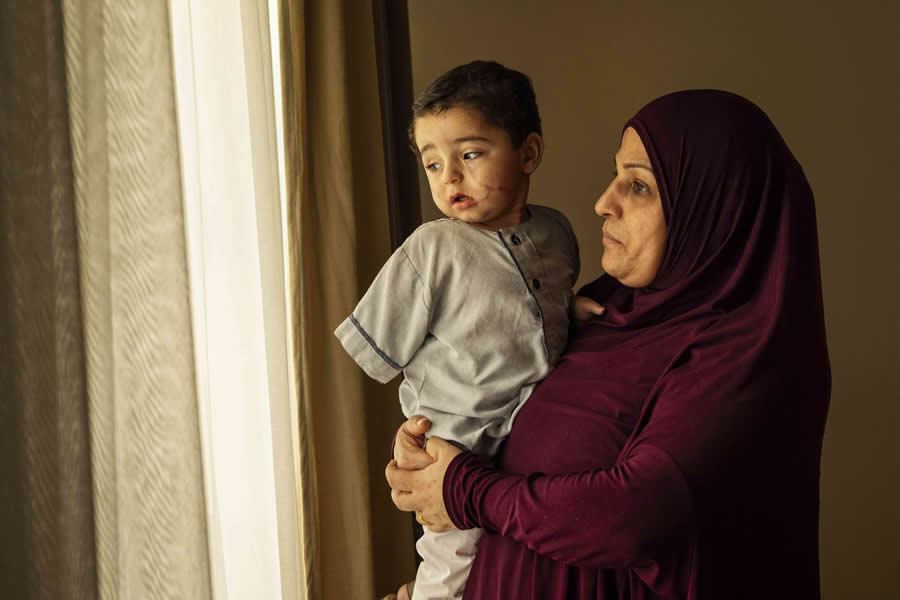
© Samar Abu Elouf, The New York Times, Palestine
Amputations. Disfiguration. Brain damage. Their injuries are life-altering. Ruba Abu Jibba lost an eye to Israeli shelling in Gaza as she and her family fled approaching tanks, she recounts. Abu Jibba is one of many severely wounded Gazans who survived a war that has claimed tens of thousands of lives. They managed to escape for medical treatment in Qatar. They are alive, though some question whether they still want to be.
#16. Story Portrait 2nd Prize: "Mitos – The Thread of Greece / Greece" by Michael Pappas
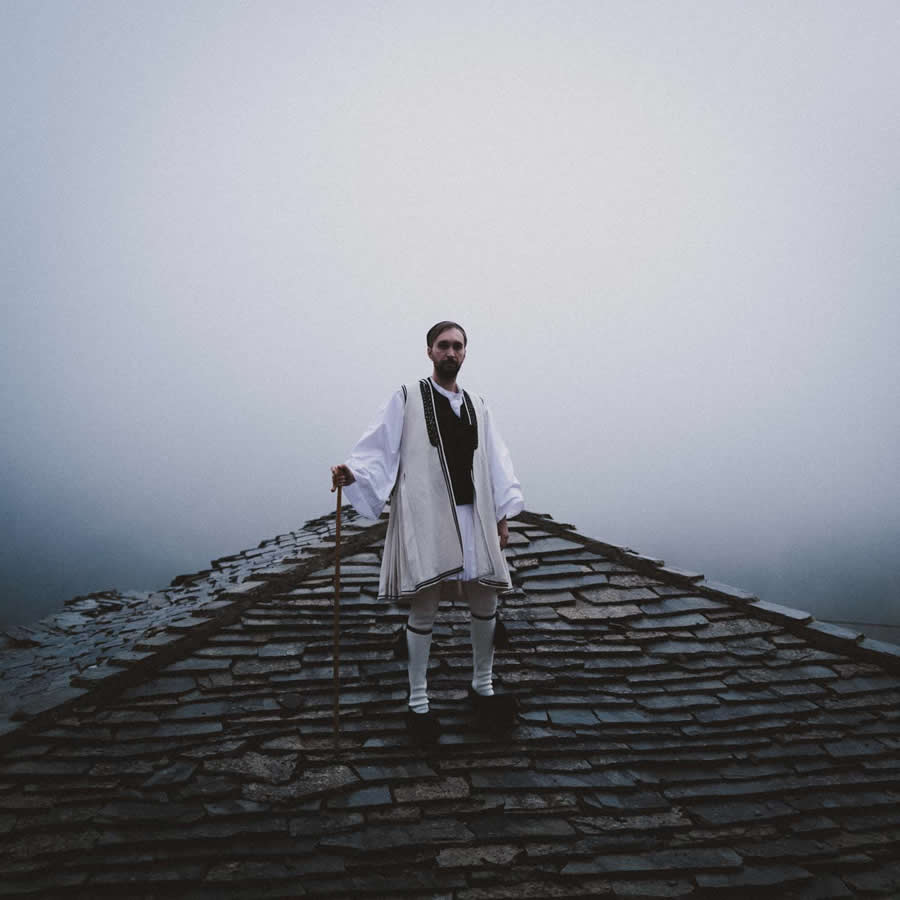
© Michael Pappas, Greece
Traditional Greek attire reflects social status and identity, highlighting the evolving role of women. In rural areas, women wore practical clothing, while urban fashion showcased wealth. Black garments signified mourning, while wedding dresses symbolized fertility. Until the 20th century, 80% of women worked in agriculture, but industrialization shifted 60% to artisanal work. By 1920, only 35% of women were literate, but education introduced Western influences. By 1980, workforce participation had risen to 45%. Since 2019, the Mitos Project has brought traditional costumes into a contemporary context.
#17. Marion Mertens Single Daily Life 1st Prize: "A Humanitarian Crisis: Starvation and Blockade / Palestine" by Mahmoud Zaki Salem Issa
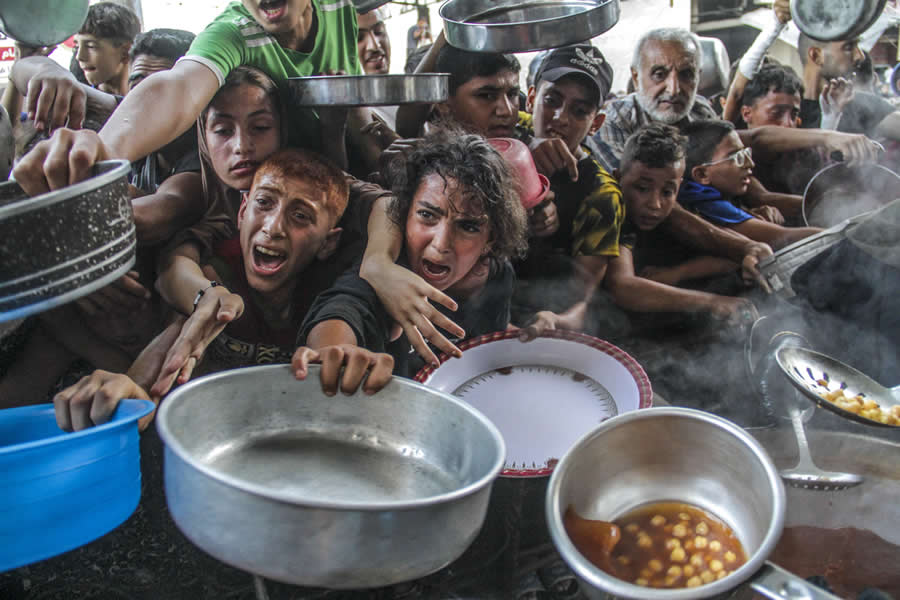
© Mahmoud Zaki Salem Issa, Palestine
Palestinians gather to receive meals prepared by a charity kitchen amid the conflict in the northern Gaza Strip on Sept. 11, 2024. As the war dragged on, Gaza faced severe shortages of food, water, and medical supplies. The destruction of water facilities left millions without clean drinking water, while the blockade restricted the entry of essential goods.
#18. Marion Mertens Single Daily Life 2nd Prize: "Beneath the Scars of War / Syria" by Sameer Al-Doumy
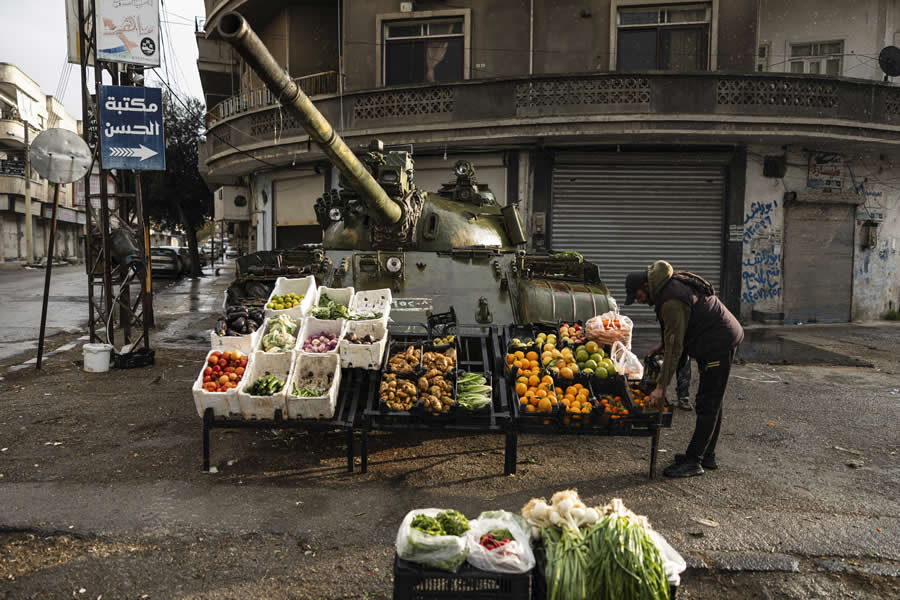
© Sameer Al-Doumy, AFP, France
A Syrian man sells vegetables in front of a damaged tank in Homs on December 20, 2024. On Dec. 8, Anti-regime forces launched a lightning offensive that took Damascus, ousting President Bashar al-Assad and bringing an end to five decades of Baathist rule in Syria.
#19. Story Daily Life 1st Prize: "Were Afghan Women to Unveil Their Tales / Afghanistan" by Valentina Sinis

© Valentina Sinis, Italy
‘Were Afghan Women to Unveil Their Tales’ is a project that offers an intimate and respectful insight into the lives of Afghan women, highlighting the challenges they face in a harsh reality. Afghanistan today grapples with numerous issues, with one of the most severe being the erosion of women’s rights and freedoms. Since the Taliban retook control, over 70 laws have restricted women’s access to education, work, health care, and freedom of movement. Despite these conditions, Afghan women demonstrate remarkable inner strength, withstanding the pressures of an environment designed to hold them back.
#20. Story Daily Life 2nd Prize: "The Beast – A Dangerous Journey Toward the American / Mexico" by Mads Nissen
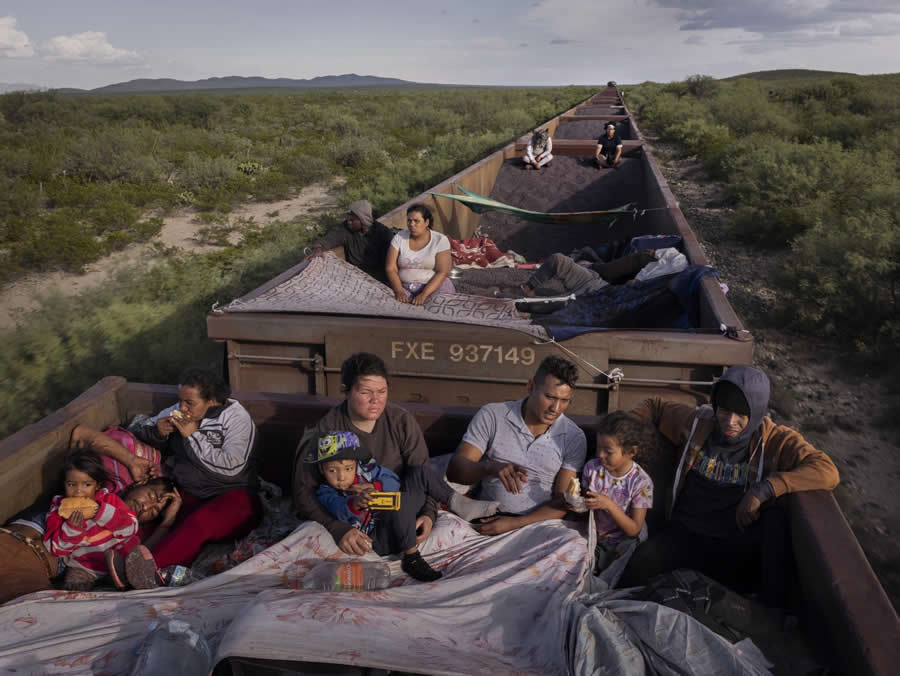
© Mads Nissen, Politiken – Panos Pictures, Denmark
Every year, millions of Latin Americans embark on dangerous journeys to the United States, driven by the hope of a better future. In response to US pressure, Mexican authorities have tightened control over migration routes, but this has come at a significant cost. Mexican law enforcement faces widespread criticism for systematic abuses and its connections to criminal cartels that profit from smuggling and exploiting migrants. To evade capture, many migrants risk their lives aboard the freight train known as La Bestia — The Beast — in a desperate attempt to reach the US.

